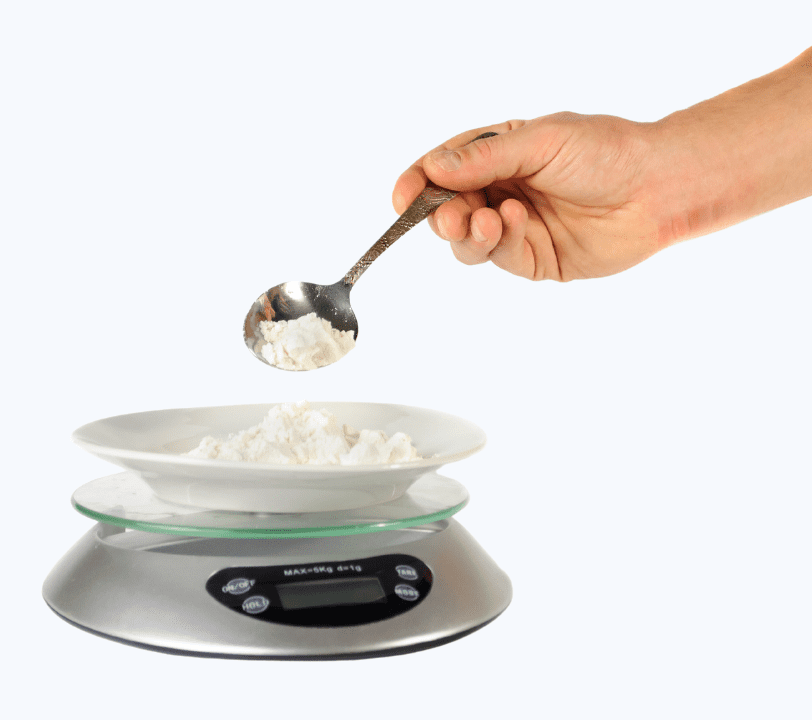Reliability (how consistent an assessment is in measuring something) is a vital criterion on which to judge a test, exam or quiz. This blog post explains what reliability is, why it matters and gives a few tips on how to increase it when using competence tests and exams within regulatory compliance and other work settings
What is reliability?

An assessment is reliable if it measures the same thing consistently and reproducibly.
If you were to deliver an assessment with high reliability to the same participant on two occasions, you would be very likely to reach the same conclusions about the participant’s knowledge or skills. A test with poor reliability might result in very different scores across the two instances.
It’s useful to think of a kitchen scale. If the scale is reliable, then when you put a bag of flour on the scale today and the same bag of flour on tomorrow, then it will show the same weight. But if the scale is not working properly and is not reliable, it could give you a different weight each time.
Why does reliability matter?
Just like a kitchen scale that doesn’t work, an unreliable assessment does not measure anything consistently and cannot be used for any trustable measure of competency.
As well as reliability, it’s also important that an assessment is valid, i.e. measures what it is supposed to. Continuing the kitchen scale metaphor, a scale might consistently show the wrong weight; in such a case, the scale is reliable but not valid. To learn more about validity, be sure to read Six Tips to Increase Content Validity in Competence Tests and Exams.
How can you increase the reliability of your assessments?
Here are six practical tips to help increase the reliability of your assessment:
- Use enough questions to assess competence. Although you need a sensible balance to avoid tests being too long, reliability increases with test length. In their excellent book, Criterion-Referenced Test Development, Shrock and Coscarelli suggest a rule of thumb is 4-6 questions per objective, with more for critical objectives. You can also get guidance from an earlier post on this blog, How Many Questions do I Need on My Assessment?
- Have a consistent environment for participants. For test results to be consistent, it’s important that the test environment is consistent – try to ensure that all participants have the same amount of time to take the test in and have a similar environment. For example, if some participants are taking the test in a hurry in a public and noisy place and others are taking it at leisure in their office, this could impact reliability.
- Ensure participants are familiar with the assessment user interface. If a participant is new to the user interface or the question types, then they may not show their true competence due to the unfamiliarity. It’s common to provide practice tests to participants to allow them to become familiar with the assessment user interface. This can also reduce test anxiety which also influences reliability.
- If using human raters, train them well. If you are using human raters, for example in grading essays or in observational assessments that check practical skills, make sure to define your scoring rules very clearly and as objectively as possible. Train your observers/raters, review their performance, give practice sessions and provide exemplars.
- Measure reliability. There are a number of ways of doing this, but the most common way is to calculate what is called “Cronbach’s Alpha” which measures internal consistency reliability (the higher it is, the better). It’s particularly useful if all questions on the assessment measure the same construct.
- Conduct regular item analysis to weed out ambiguous or poor performing questions. Item analysis is an automated way of flagging weak questions for review and improvement. If questions are developed through sound procedures and so well crafted and non-ambiguously worded they are more likely to discriminate well and so contribute to a reliable test. Running regular item analysis is the best way to identify poorly performing questions. If you want to learn more about item analysis, have a look at our blog article, Item Analysis for Beginners here.
We hope this article reminds you why reliability matters and gives some ideas on how to improve reliability. There is a lot more information on how to improve reliability and write better assessments on the Questionmark website – check out our resources at www.questionmark.com/resources.
Interested in learning more about Questionmark? Talk to us today!